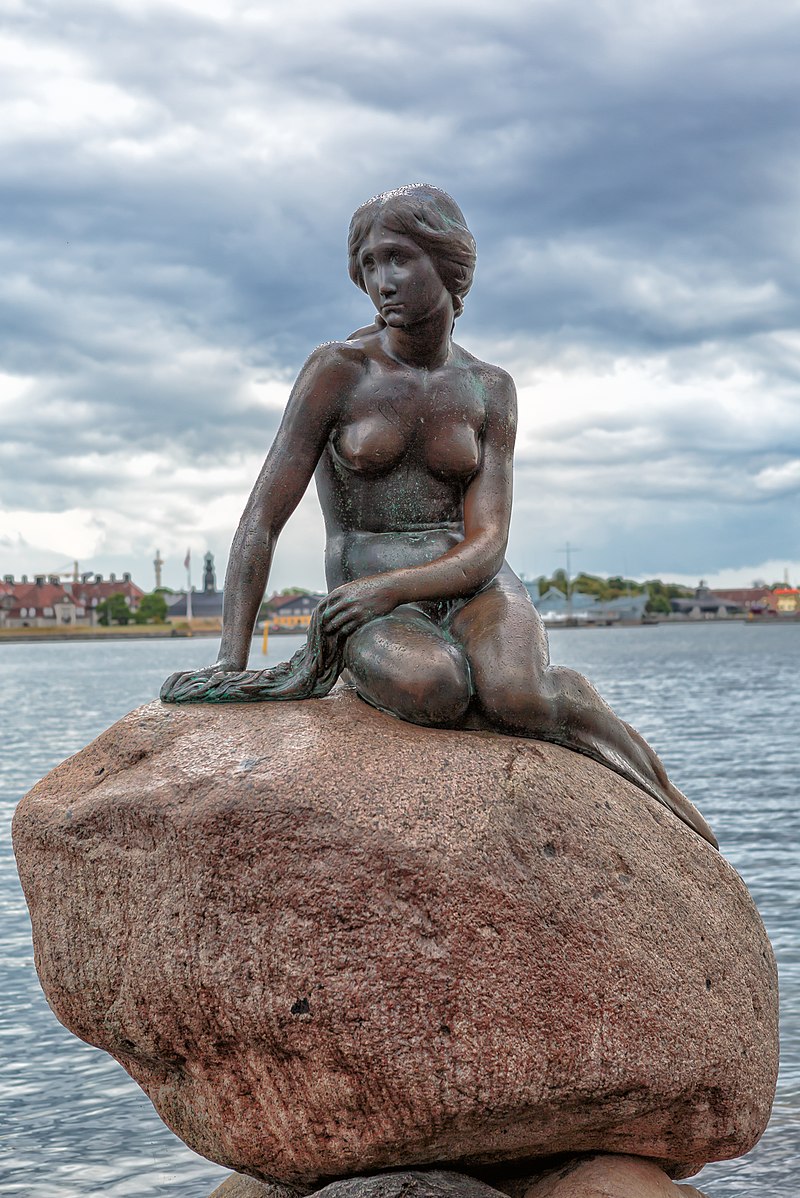
He was a weaver of tales who brought us The Little Mermaid, The Wild Swans, The Emperor’s New Clothes and the Ugly Duckling. In the course of his lifetime he wrote novels, travelogues, and over three thousand fairy tales which have been translated into 125 languages. His stories have universal appeal, transcending age and nationality. He created a unique mythology which continues to haunt us and remains part of our collective consciousness.
Hans Christian Andersen was born on this day, April 2, 1805 in Odense, Denmark. His own life story is a classic rags to riches that could have been one of his fairy tales.
His father, also named Hans, was a struggling tradesman and his mother Anne Marie a washerwoman. Hans Sr. died in 1816. Two years later Anne Marie remarried. It was then decided, for some odd reason, that Hans Jr. should no longer be allowed to live in the house. At the tender age of eleven, Hans was sent away to a boarding school. (Evil stepfather, banishment. Do you see a pattern here?) Although the family was poor, Hans was somehow allowed to study and receive a good education. (Fairy godmother perhaps?)
At boarding school, the boy was expected to fend for himself and he earned money as a tailor’s apprentice. He showed a natural talent for singing and at age fourteen, he was accepted into the Royal Danish Theater. However, as luck would have it, Hans hit puberty that year, experienced the voice change, and could no longer sing the soprano part he had been assigned. But all was not lost — Jonas Colins, the theater director, saw something special in Hans and made arrangements that he could attend prestigious school in Elsinore.
Young Hans might have been considered privileged, but his story goes a bit dark here. He was sent to live with a school master who routinely abused and bullied him and discouraged him from writing. He went into a deep depression, and later wrote that his days at Elsinore were the darkest of his life.
The story, however, has a happy ending. Andersen graduated school in 1827 and almost immediately became successful writing short stories, plays and poetry. King Christian VIII of Denmark was so impressed with his work that he gave Andersen a grant to travel around Europe. Hans felt most comfortable on the road and later wrote, “To travel is to live.”
All these fairy godmother type favors may not have been an accident. There was a rumor that Hans Christian Andersen was actually the illegitimate son of Christian, King of Denmark. This rumor, however, has not been substantiated by any reliable source. (If true it would make a great story!)
It was during his travels across Europe that Andersen began writing fairy tales. In 1838 he wrote Fairy Tales Told for Children. This book earned him immense popularity when, in 1845 it was translated to English and other languages. It became a world wide best seller.
Andersen’s tales were often dark and creepy. By today’s standards, I find it rather astonishing that he decided to ‘go there’ regarding topics such as suicide, self harm, body mutilation, and a plethora of evil. His heroes and heroines often go through enormous difficulties. Although the endings are usually happy, they pay great prices for that happiness, often undergoing physical, mental and spiritual changes. For example:
— Karen, the protagonist in The Red Shoes, loves to dance and wear her beautiful shoes. However, it gets to the point where she cannot stop dancing and eventually her feet must be cut off!

— The Little Mermaid trades her fish tail for human legs. In the process she undergoes excruciating physical pain, is betrayed by a handsome prince, and even commits suicide before she is freed to the Daughters of the Air.

— In The Wild Swans, Eliza wants to free her brothers from a terrible curse, but to do so she must knit sweaters made of poisonous nettles that cause her fingers to bleed. To make matters worse, she has taken a vow of silence! During this time she is arrested for witchcraft and thrown in the dungeon.

And the list goes on. These stories remain popular because they entertain in a way that enables problem solving — while giving kids the scare of their lives! 🙂 The message is always that virtue will be rewarded.
Andersen never married, although he courted several women and wrote a few love letters to men as well. Some historians believe he was bisexual. He seems to have harbored terribly romantic ideas about love and often chose partners that were either unavailable or inappropriate. At one point he proposed marriage to the Swedish singer Jenny Lind.

She turned him down, but this did not stop Hans from writing a fairy tale which was inspired by her. It was called The Nightingale, about (you guessed it) a precious and beautiful bird that serenades the emperor. After that, Jenny Lind was given the nickname “The Swedish Nightingale.”
Andersen had a long and prosperous life. He died in Copenhagen on August 4, 1875, His death is thought to be caused by complications of liver cancer.
Andersen’s stories are still widely read. Many have been adapted as Disney features, including The Ugly Duckling, The Little Mermaid and Frozen — adapted from The Snow Queen. In the original story the Snow Queen was an evil kidnapper, nowhere near as kind as Elsa!

Tribute statues to Andersen have been built all over the world, including New York’s Central Park, California, Sydney Australia and Rosenborg Castle Gardens in Copenhagen.
And of course, if you ever happen to be at the Langelinie promenade in Copenhagen, you can say hello to The Little Mermaid herself!
Happy Birthday Hans!
